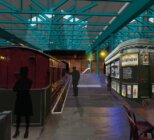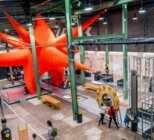The Massive Open Online Course, Working Lives on Britain’s Railways: Railway History and Heritage, has been conceived to maximise global engagement with the UK’s unique railway heritage and help the public explore seldom told stories of railway workers between the early 1800s and the outbreak of the First World War.
The course’s first run has been accessed by over 1,500 people from 67 countries, including individuals from South Africa, New Zealand and Chile. “It has been great to see so many people, from across the globe, coming together to explore the lives of Victorian railway workers,” noted Dr. Oliver Betts, research lead at the National Railway Museum.
“Talking with so many enthusiastic learners has given us new ideas and perspectives, and it is so exciting to see how much this key part of our national past ignites their interest. Their ideas will be really valuable when it comes to thinking again about how we tell the story of the Victorian railway in our upcoming redesign.”
Betts is leading the course along with Professor Kirstie Blair from the University of Strathclyde. Blair, who serves as head of the University’s School of Humanities, said: “It’s been fantastic to see the lively discussions among people taking this course, and their stories and memories of railways and railway work past and present. We were delighted that our partnership with the National Railway Museum enabled this course to happen.”
The four-week agenda focuses on a different railway occupation each week. The four topics discussed are; the role of an engine driver; the art of signalling and the role of the signalman; the lives of the navvies who built the railways; and clerks and other professionals who worked behind the scenes.
Registration for the course’s next session is now open, with resources being made available in January. Access to the course’s learning materials and content will remain available indefinitely to enable more people to take part in future.
Supplementary to the course, Betts and Blair will also be hosting a talk on 27th November as part of the Institute of Railway Studies Seminar at the National Railway Museum.









